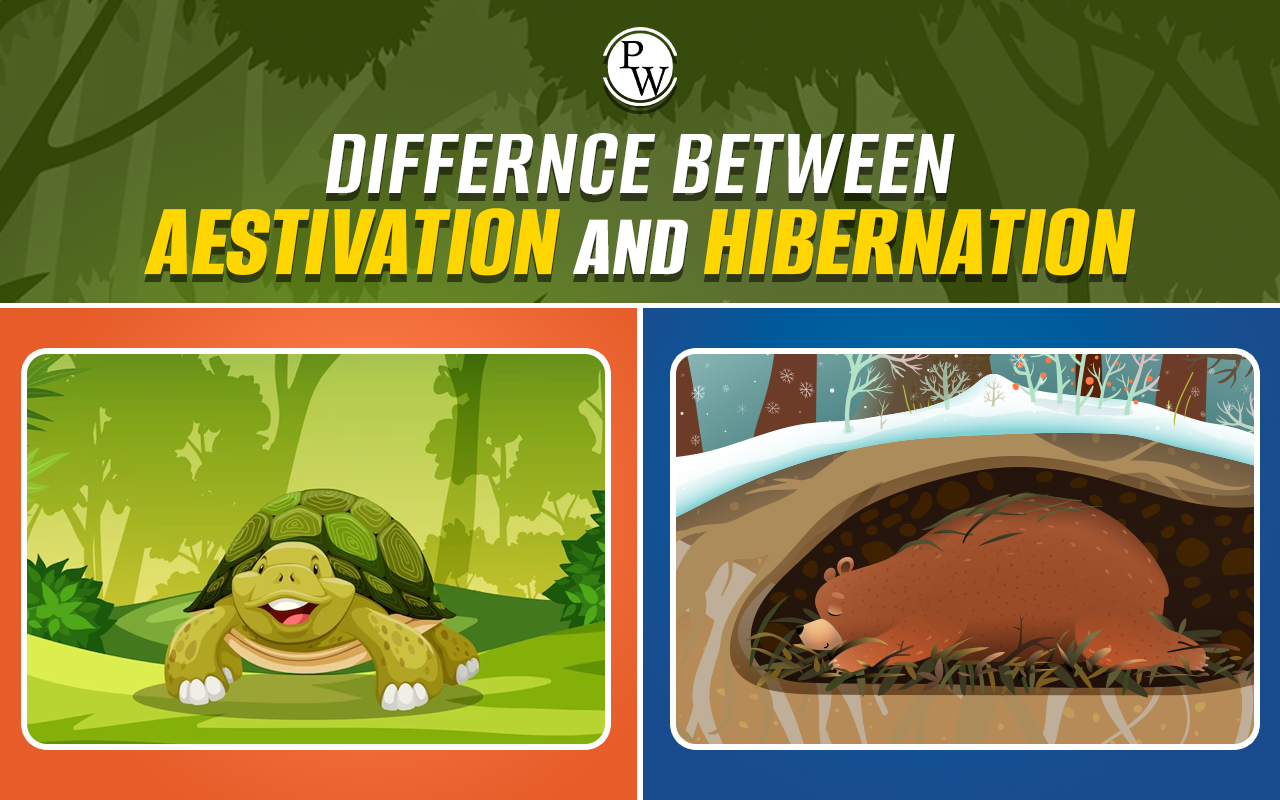

Aestivation is the natural state of animal dormancy that takes place in the summer season. It is characterized by inactivity and lowered metabolic rate with a low percentage of hunting which is a response to high and warm temperatures and dry conditions. let explore the Difference Between Aestivation And Hibernation in detailed explanation.
Hibernation is a state of inactivity and metabolic depression that is characterized by low body temperature, slow heart rate, and slow breathing. It occurs during the winter season.
Also Check - Diagram Of Ear
Ectothermic And Endotherms Organism
To understand hibernation and aestivation we need to understand different types of organisms that exist in nature and why they undergo such states.
Some animals choose certain adaptations to thrive in extreme atmospheric conditions when they cannot migrate to other places. Hibernation and aestivation are among those adaptations, which help them to survive in extreme conditions.
Two types of organisms exist in nature which are Endothermic & ectothermic organisms.
Ectothermic organisms are those organisms whose body temperature depends on the atmospheric/surrounding temperature in which they live. As an Ectothermic organism's body temperature depends upon the ambient conditions they don't need more energy to regulate its body temperature and live comfortably in natural ambient conditions. Animals like lizards and many more come under the Ectothermic category.
Endotherms are those organisms that can regulate their body temperature by producing heat through metabolism activities.
Also Check - Diagram Of Heart
What is Hibernation
Hibernation generally takes place in warm as well as cold-blooded animals like bats, birds, mammals, fish, amphibians, etc. Generally in the winter season, when a change in atmospheric temperature occurs, these organisms search for a warm place to sleep to protect themselves against any detrimental effect due to a drop in atmospheric/ambient temperature. In the hibernation state, the body of these organisms goes for a longer duration of sleep or undergoes an inactive state for a longer period depending upon certain aspects such as the type of animal species, their tolerance or resistance power towards the outer atmosphere, and time of year. This hibernation can last from a few weeks to several months.
Examples: - Bats, Birds, insects, Mammals, Bears, Bumblebees, Box turtles, Chipmunks, etc.
Also Check - Coal And Petroleum
What is Aestivation
On the other side, Aestivation generally takes place in only cold-blooded animals like Frogs, mollusks, arthropods, reptiles, earthworms, snails, etc. When the weather changes during the summer and organisms, particularly those in deserts and tropical areas, are exposed to such warm atmospheric conditions during the day, they look for a moist, cool, and shady place to sleep in order to lessen or prevent water loss from their bodies and protect themselves from the intense heat. These organisms undergo a short-duration of inactive state to avoid dehydration and to save energy. Animals living in the desert and tropic regions mainly reptiles and amphibians undergo aestivation whereas plants like guava also adopt aestivation.
The main aim of aestivation is to prevent water loss from the body and to save energy. In the case of hibernation, the main aim is to survive against harsh atmospheric conditions for a longer duration. Hence to survive during hibernation, these organisms consume a lot of food and store it in the form of excess fat before undergoing hibernation. This excess fat stored in the body of the organism supplies energy during the sleeping or inactive state.
Examples: - Bees, Water-holding Frogs, Earthworms, Desert tortoises, crocodiles, snails, salamanders, lungfish, etc.
Also Check - Climate Factor Changes
The Similarity Between Hibernation & Aestivation
Hibernation, as well as aestivation both, refers to the inactive state that an organism undergoes for sleep to prevent any internal body damage that may occur due to the change in ambient temperature. Hibernation denotes winter sleep, whereas Aestivation refers to summer sleep. This sleep is not the normal sleep on any other day as organisms choose to have a low metabolic activity to preserve their body temperature as well as their energy.
The key difference between Hibernation & Aestivation
| Key Parameters | Hibernation | Aestivation |
| Meaning | Referred as Winter Sleep | Referred as Summer Sleep |
| Duration | Organisms undergo hibernation for a long duration | Organisms undergo aestivation for a short duration |
| Location | Organisms look out for a warmer place to go under hibernation | Organisms look out for a moist, shady, and cold place to go under Aestivation |
| Season | Winter Period | Summer Period |
| Type of Organism | Mainly warm as well as cold-blooded organisms undergo hibernation | Mostly cold-blooded organisms undergo aestivation |
| Reason | Lack of food Extreme cold atmospheric conditions | Hot, dry, and arid climatic conditions trigger factors. environmental stress such as drought, famine, and water scarcity |
| Purpose | Protection from the extremely cold environment | Protection from the insufferable heat |
Animals choose a different path to fight against extreme climatic conditions either through migration to other suitable places or by staying in place.
The resting pattern of the animals may differ based on the climate and their stage of life. Aestivation and Hibernation both are the natural state of organism dormancy, which help them to survive in extreme atmospheric conditions. This dormancy differs from normal sleep. Not all organisms are habitual of these adaptations. It helps them to fight extreme atmospheric conditions by lowering metabolic rate or metabolic depression.
Difference Between Aestivation And Hibernation FAQs
What do you mean by Aestivation?
Give the example of Aestivation?
Write the names of animals that show aestivation?
Write the names of animals that hibernate?
Do humans hibernate?












